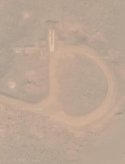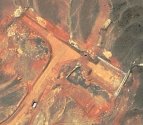More recent Chinese delivery vehicles are equipped with multiple decoys in addition to the actual warhead. Technically a MIRV is used, just that the majority of re-entry vehicles are decoys rather than warheads. Perhaps I should've worded my original statement as, given the ratio of warheads to ICBMS/SLBMS, the PLA seems to not be a fan of using multiple real warheads per delivery vehicle.
Before drawing this conclusion, shouldn't we verify whether the judgment basis assumes China's actual warhead count remains as low as Western estimates?
If using HGVs (Hypersonic Glide Vehicles), their larger weight naturally limits the number of warheads a single missile can carry.
Regarding other delivery systems: Large-yield single warheads have significant weight and length (e.g., DF-31's 700kg warhead), making them inherently incompatible with MIRV (Multiple Independently Targetable Reentry Vehicle) designs for ICBMs. Additionally, delivery vehicles with high payload capacities (like DF-26) could theoretically deploy 1-2 low-yield warheads (150-250kg) over intercontinental ranges (~10,000km), while lightweight decoys weigh just a few kilograms. For systems like DF-31B, JL-2/3, DF-41, and DF-5B with payload capacities of 1-5 tons, developing such warheads seems redundant given their massive carrying capabilities. Thus, Western estimates of China's ICBM launchers and warhead numbers must have at least one critical error in their calculations.
China's nuclear warheads fall into three categories in terminal guidance:
Cluster warheads
MIRVs
Full-guided warheads (including HGVs as a subtype)
Notably, China has researched cold shroud technology for nearly two decades, with technical details frequently published in academic papers. This innovation involves wrapping warheads in a liquid nitrogen-convection outer cover to reduce their infrared signatures in space to near-background levels—a critical midcourse penetration enhancement. Implementation adds ~100kg to the warhead's mass (significant for smaller warheads).
Warhead dimensions can be inferred from cold shroud research literature, revealing two distinct categories:
Compact warheads (suitable for MIRV configurations)
Larger warheads (optimized for single high-yield strikes)
This technical reality directly challenges Western assumptions about China's warhead-to-delivery-system ratios.


